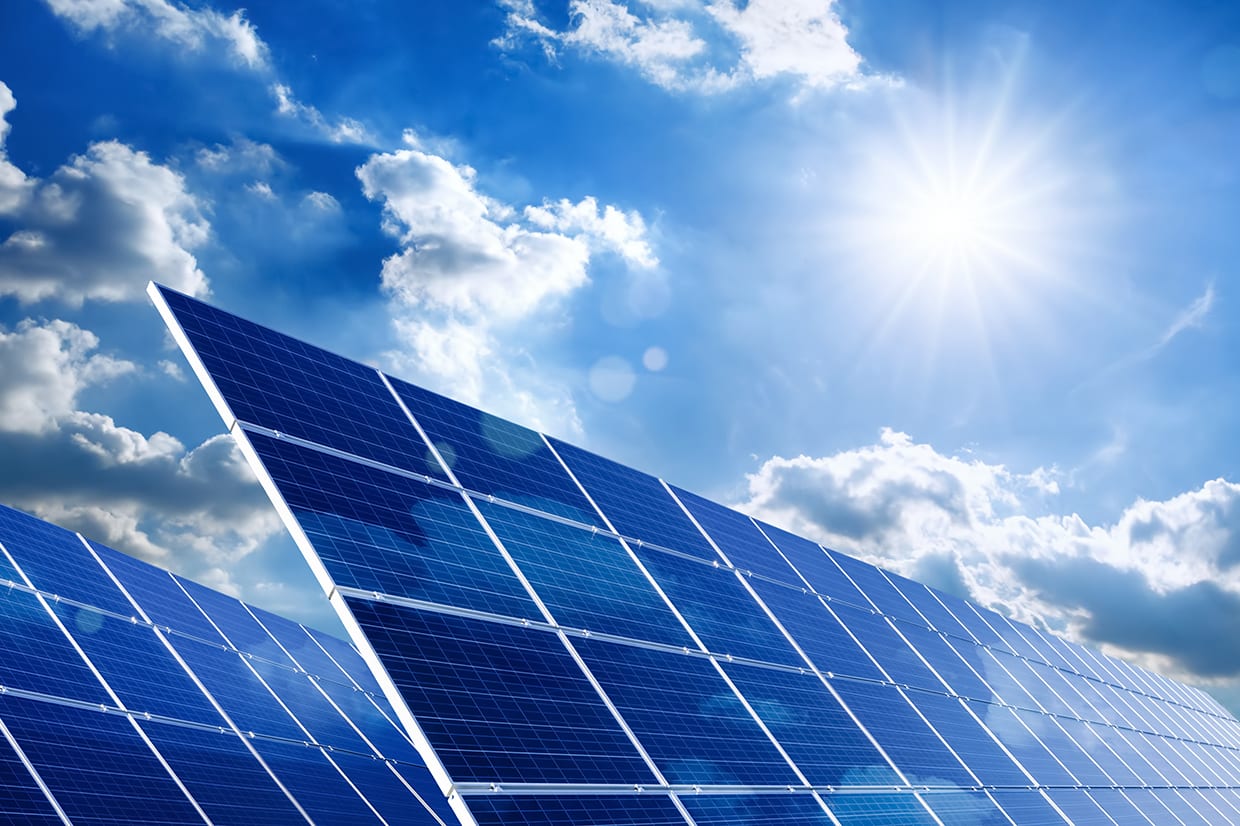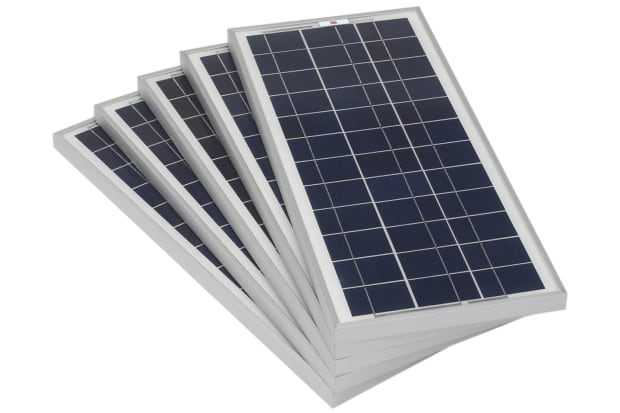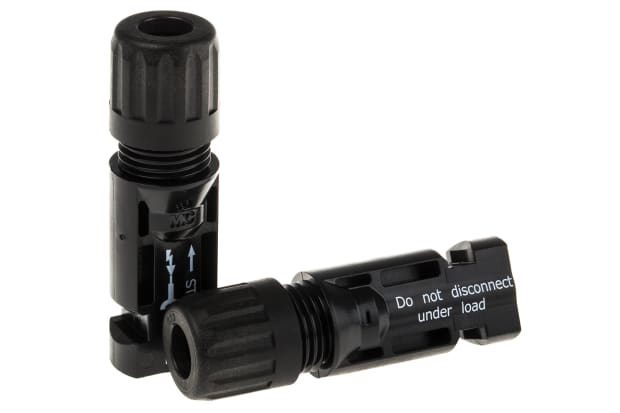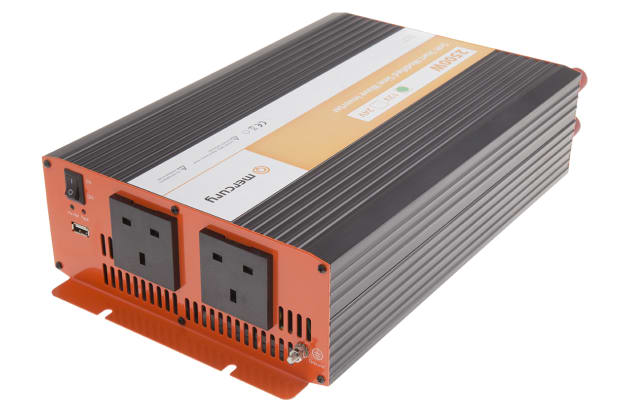- Published 15 Aug 2023
- Last Modified 23 Apr 2024
- 12 min
Guide to Renewable Energy Technology
Discover how to build a green energy future with renewable energy.

Published December 2021. Last Updated January 2022
Guide to Renewable Energy Technology
In an age where sustainable solutions are more important than ever, there is a pressing need to transition to cleaner energy alternatives. Renewable energy stands at the forefront as a viable solution, and it is already playing a significant role in many countries around the world.
In our guide to renewable energy, you can learn about what renewable energy is, the common types of renewable energy sources, and some unique opportunities and challenges found in them.
What is Renewable Energy?
Renewable energy comes from processes or sources that are continually being replenished. These include, for example, solar, wind, geothermal and hydropower.
Renewable resources are virtually inexhaustible in the long term but are limited in terms of the amount of energy generated per unit of time.
These sources are frequently considered to be green or clean energy, although there are major differences. Renewable energy sources are recyclable, and they can be generated almost perpetually. Clean energy sources acquired the name because they do not release pollutants such as carbon dioxide into the atmosphere, and green energy originates from natural sources.
Not all types of renewable energy are entirely green or clean. For instance, hydropower plants can cause deforestation and damage natural habitats despite being recyclable.
Types of Renewable Energy

Each renewable energy source has advantages and disadvantages. They will depend on factors including location, the time of year, and usage requirements.
Here, we focus on the main renewable energy sources:
1. Solar Power
The sun has enormous potential to meet our energy needs, and solar power is one of the most common types of renewable energy.
Solar energy, generated by solar or photovoltaic (PV) cells, is currently used to heat buildings and water, as well as power our devices. These solar PV cells are typically made of silicon and are designed to convert sunlight into electricity, creating power.
Rooftop solar panels can provide domestic power, while community cooperative projects and solar farms are designed for large-scale energy generation.
In addition, solar power systems are clean energy sources as they do not produce pollutants or greenhouse gases. As long as the panels are responsibly manufactured and positioned correctly, they can also be considered green energy since they do not have a negative environmental impact.
However, harnessing and storing solar energy is not without challenges. For example, solar power is entirely dependent on sunlight, which may not be available all the time due to seasonal variations, nighttime, and cloudy days. There are also challenges when it comes to developing affordable, large-scale solar energy storage technologies and systems.
2. Hydroelectric Power
Hydroelectricity is the second type of common renewable energy.
Hydroelectric power generation systems harness fast-running water in rivers to drive turbine blades, producing energy. Water flowing through pipes or penstock in a hydroelectric power plant drives the blades of a turbine, which is connected to a generator to produce electricity.
Conventional hydropower plants comprise a dam to redirect water flow in rivers to their moving water systems, where current forces exert pressure on a turbine. The rotating turbines are connected to electrical generators, which convert mechanical energy into electrical energy.
Hydroelectric power is renewable, but it is not necessarily green. Hydropower plants can have an adverse impact on the microclimate, their surroundings, and animal populations, depending on how they are built. Nevertheless, if carefully managed, small-scale hydroelectric power plants under 40 megawatts don’t have a significant effect on their surroundings.
3. Wind Power
Wind power is the third type of common renewable energy. Wind energy works in the same way as a traditional windmill, using wind power to turn the blades. Turbines drive a generator that produces electricity in turn.
On-shore and off-shore wind farms are both popular solutions with their pros and cons. Let’s look at them in detail.
On-shore wind farms are located on land, typically on open plains, hills, or coastal regions, where there are favourable wind conditions. They have lower installation costs and are more accessible, but they are affected by climate conditions, such as damp and bad weather.
Off-shore wind farms are in shallow or deep bodies of water, such as in coastal areas. They are not too intrusive and can harness high wind speed out at sea, resulting in increased energy production. However, they are more expensive and require specialised infrastructure.
Wind energy is clean but not necessarily green energy. This is because of the processes involved with the manufacture and installation of the turbines, which may have a potential impact on wildlife and create noise pollution.

4. Biomass Power
Biomass technology involves the generation of electricity with organic plant material, including trees, crops, and waste wood. Burning biomass creates heat, which powers a steam turbine and generates electricity.
Biomass is converted to energy through various processes, including:
- Direct combustion (burning) to generate heat
- Thermochemical conversion to produce solid, gas or liquid fuels
- Chemical conversion to produce liquid fuels
- Biological conversion to produce liquid or gas fuels
- Direct combustion is the most common method of converting biomass into useful energy for heating buildings and water, providing heat for industrial processes, and generating electricity via steam turbines.
Although biofuel can be classed as renewable, provided that it comes from sustainable sources, there are many examples where it isn’t clean or green.
Experts have shown that biomass from forests can produce higher CO2 emissions than fossil fuels and may also negatively impact biodiversity.
However, some types of bioenergy offer a low-carbon alternative in certain situations. Wood chippings and sawdust from sawmills can be used for biomass power generation since these materials would otherwise decompose and release higher levels of CO2 into the atmosphere.
Researchers continue to work on innovative ways to improve the conversion of biomass into energy.
5. Geothermal Energy
Geothermal energy harnesses heat from the earth's core, a renewable source generated by the gradual decay of radioactive particles beneath the planet's crust. This heat can be captured to heat water, buildings, and generate electricity using turbines driven by hydrothermal resources brought to the surface through drilling wells. To reduce emissions, the process can be made greener by returning steam and hot water underground.
However, the availability of geothermal energy depends largely on geographical location. Countries like Iceland can easily access geothermal resources, making it their primary energy source, many other regions lack such accessibility.
6. Wave and Tidal Power
Tidal energy, or wave power, is a renewable energy source. It harnesses the kinetic energy of ocean tides to generate electricity, and the moon’s constant gravitational pull causes the ocean tides since the moon’s constant gravitational pull causes tides.
Tidal power is a reliable source of energy, but there are challenges associated with it, such as high upfront costs, limited suitable locations with strong tides, and a potentially negative impact on marine ecosystems.
Renewable Energy: Economic Benefits and Disadvantages
Renewable energy sources will not be exhausted, at least not for many millions of years. They provide a viable alternative to non-renewable resources, such as fossil fuels. Many are also environmentally friendly and do not produce CO2. However, there are also unique challenges that come with each renewable energy source.
Below, we look at some of the main advantages and disadvantages of renewable resources.
Benefits of Renewable Energy
Renewable energy provides advantages, the first one being the readily available energy sources that come from nature. Renewable energy is mostly clean and green, especially in the form of solar and wind power.
Additionally, as the renewable energy industry grows, there has been a surge in job creation related to the development and installation of state-of-the-art infrastructure for alternative energy sources. The research of renewable energy technologies has also created many job opportunities.
Renewables also offer improved access to energy on a global scale and may also reduce the cost of utility bills. In general, renewable energy has the potential to reduce electricity sector emissions by around 80%.
Disadvantages of Renewable Energy
Despite the many pros of renewable energy, some challenges come with it. Variability due to weather and climate means solar and wind power cannot always be relied upon, unlike fossil fuels like natural gas. Additionally, biomass and hydroelectric power, while more consistent, pose environmental concerns, from biomass burning to the environmental impact of hydropower plants.
Furthermore, renewable energy installations can negatively impact communities. Solar and wind farms often face opposition from residents due to noise pollution, visual disruption, and lifestyle disturbances. To address these challenges, many companies are integrating multiple renewable energy sources to create a more resilient supply system.
Energy providers are increasingly considering environmental impact when building power plants, using sustainable materials, employing better renewable energy technologies, and minimising disruption to wildlife and communities during installation.
Innovation and Trends in Renewable Energy
To address the challenges of renewable energy, various innovative technologies have emerged that enhance the performance, capacity, and lifespan of renewable energy systems. Some that are revolutionising the field include:
- Floating solar: Solar panels on water bodies that increase efficiency and avoid land use conflicts.
- Off-shore wind farms: Wind turbines in oceans or large lakes that harness stronger winds and integrate with tidal turbines or hydrogen production.
- Concentrated solar power: Mirrors or lenses that concentrate sunlight onto receivers and store heat for electricity generation.
- Wave and tidal power: Devices that capture ocean energy with buoys, oscillating water columns, or underwater turbines.
- Hydrogen power: Renewable sources that produce hydrogen for various applications, such as vehicles, power generation, or industrial processes.
Today, the sector is witnessing significant advancements, with a notable focus on:
- Cost reduction and competitiveness: Renewable energy has become cheaper than fossil fuels in many regions, thanks to technological improvements, economies of scale, and policy support.
- Integration and flexibility: Systems use smart grids, energy storage, and hybrid solutions to integrate and balance with the existing power systems, ensuring reliability and flexibility.
- Decentralisation and democratisation: It is shifting the power generation from large and centralised plants to small and distributed units, such as rooftop solar panels, community wind farms, or micro-hydro plants, empowering individuals, communities, and businesses to produce, consume, and sell their own clean energy.
Debunking Common Myths about Renewable Energy
Renewable energy is a promising solution to the global challenges of climate change, energy security, and economic development. However, it also faces some obstacles that have led to some widespread myths about it, which may discourage people from using or supporting it.
Myth: Renewable energy is too expensive to compete with fossil fuels.
Renewable energy has surpassed fossil fuels in cost-effectiveness due to technological advancements, economies of scale, and supportive policies, making it a viable competitor in many regions.
Myth: Renewable energy is too intermittent to provide stable power.
Advancements in grid management and storage technologies have enhanced the reliability and flexibility of renewable energy sources, enabling them to deliver stable power even in the face of intermittency challenges.
Myth: Renewable energy can’t meet growing energy demand
Renewable energy holds the potential to significantly contribute to global energy needs while concurrently reducing CO2 emissions, indicating its capacity to meet growing energy demands sustainably.
Conclusion: Making the most of renewable energy
Renewable energy can play an important role in reducing greenhouse gas emissions and combating climate change. It can also help ease the need to import energy and use fossil fuels, which are currently the main source of carbon dioxide emissions.
There are pros and cons associated with the use of renewable energy, which must be considered. However, overall, they tend to make a positive impact on the environment and their users, and renewable energy looks set to be a major part of future energy provision, alongside other clean sources such as nuclear energy.
The shift towards a greener future for power generation is also driving a rise in job creation in renewable energy industries, such as solar and wind power.
There may be issues with renewables linked to supply, consistency, and fuel diversification. Still, the renewable energy sector continues to undergo significant development in our day and age to minimise them, and renewable energy could meet our needs in the years to come.
Recommended Products for Installing Solar Panels & Photovoltaic Systems
Solar Panels
Discover a wide range of electrical and industrial products for photovoltaic solar panels.
PV Inverters
Photovoltaic inverters are a crucial component of any solar power system. Click through to browse the full range.




